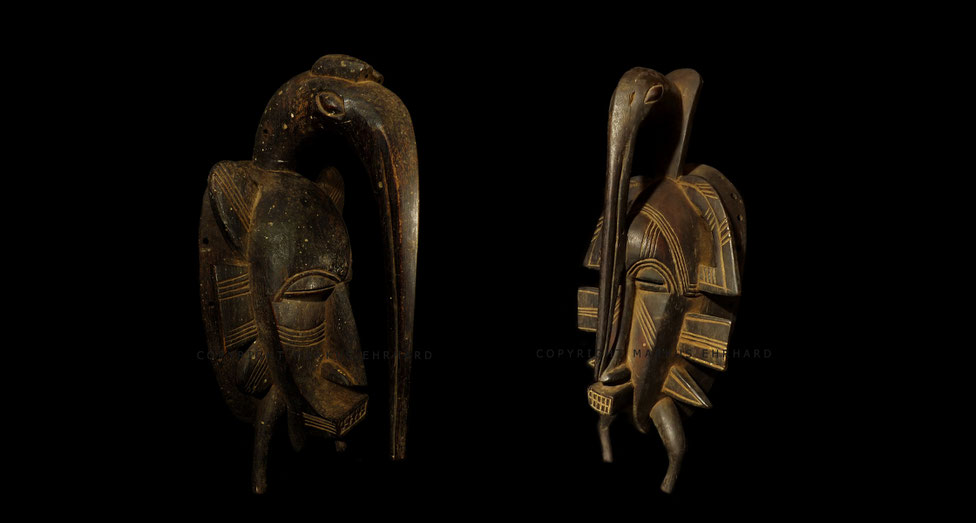
The legend of the Calao says, that this hornbill bird picks at a man's forehead to give him power, knowledge and wisdom. So every Kpelié in wood or metal does have this center mark. Sometimes you read definitions, that that this mark is a sacrification or even a beauty mark.
At the Senufo culture, there are Calao statues from very small (from 7 cm) up to human size known. These smaller statues are used by a diviner, larger ones can be placed at a dancer's head. Antique statues show the traditional black stain treatment, birds carved after 1950 can be painted in white with some ornaments, recent ones are partly covered with bras plates (mostly used in Airport-art to make the object look dramatic, these metal plates have no meaning in ritus).
The Calao is one of the archtype animals in Senufo culture. His portraiture is mostly very stylized and kind of abstract. There are many classic Kpeliés known with a Calao bird as center top. But the two shown masks represent an own genre: The Kpelié with a Calao head and a very long peg of the hornbill, that covers the complete face.
Both masks shown are recent masks and came from the region of Korhogo. The right one is carved very simple, the end of the peg touched the nose tip and is fixed. The peg at the left mask stands free without any attachment at the face. Masks of this genre usually are very impressive and demand skill and ability by the carver.
I could not clarify till today, what the exact use, meaning and symbol of this genre is. Or this type has an own name or association. It is not confirmed, that these masks dance at the Poro only. Everyone I asked tells me, that this type represents power and wisdom. I persume, that these masks were danced at harvest festivals, because a properous farmer has a lot of sageness, when he picks a huge yield.
Left: Kpelié mask, carved by an unknown carver, region of Korhogo.
32,0 x 15,0 x 13,5 cm, wood.
Literature:
- Wenn Urform Form bestimmt, Markus Ehrhard, pages 106 - 107.
Right: Kpelié mask, carved by an unknown carver, region of Korhogo.
32,0 x 14,0 x 10,0 cm, wood.
Literature:
Not published yet.
Copyright content and images by Markus Ehrhard

